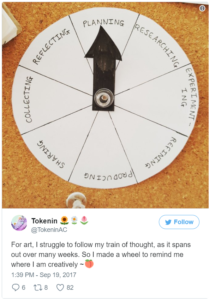(This column is posted at www.StevenSavage.com and Steve’s Tumblr)
(Here’s a series I haven’t touched in awhile.)
At Con-Volution I got into a fascinating discussion with a cosplayer on how complicated outfits were. This led to the usual discussion of “how the hell do you go to the bathroom.” That, fortunately led to a productive discussion, and one I want to cover.
Conventions should do a panel on Healthy Cosplay.
What do I mean? Think about all the challenges that cosplay involves – eating food, tightness, maneuverability, going to the bathroom. I’ve heard many horror stories from cosplayers about their experiences. You know even experienced ones are surprising themselves. So I think most any con with a cosplay presence should have a panel on Healthy Cosplay – and if your con is about Cosplay, this should already be there.
I’ve seen a few panels like this, but after our discussion I realized how many subjects there are to cover. So I want to toss out this idea to encourage you to do this.
Imagine panels covering things like:
- Well, how to go to the bathroom. Please include gender differences.
- Bindings, corsets, and tightness – breathing is important as is circulation.
- Eating and drinking. Can you get nutrition and more importantly fluid easily?
- Visibility. How do you make something you can see in?
- Safe mobility. It’s not easy to maneuver, and in some cases this can be dangerous.
- Common allergies to materials.
- Ventilation and temperature. I’m in California, trust me.
There’s a lot of ways to do this but I would encourage any group that does this to make sure it has:
- Handouts.
- Online references.
- Perhaps a free ebook.
if I can spend ten minutes in a discussion on cosplay and using the bathroom, you know there’s an audience for this. Maybe we don’t talk about such things as much as we should, but . . . let’s Make It So.
– Steve
